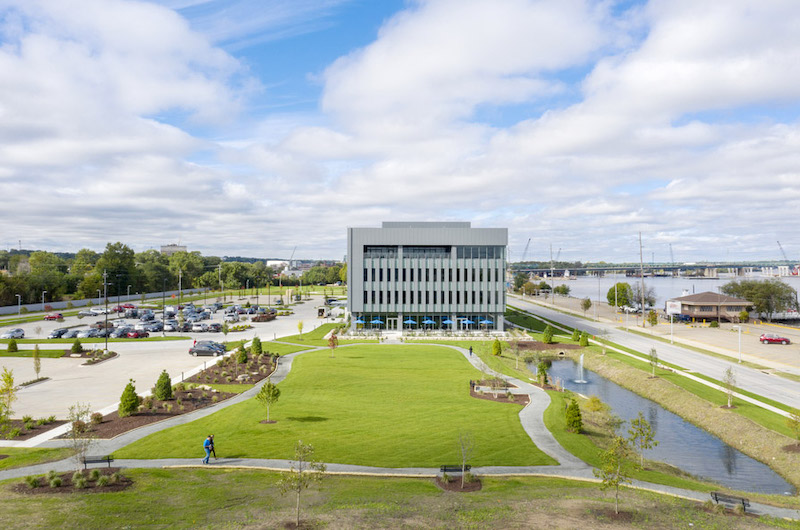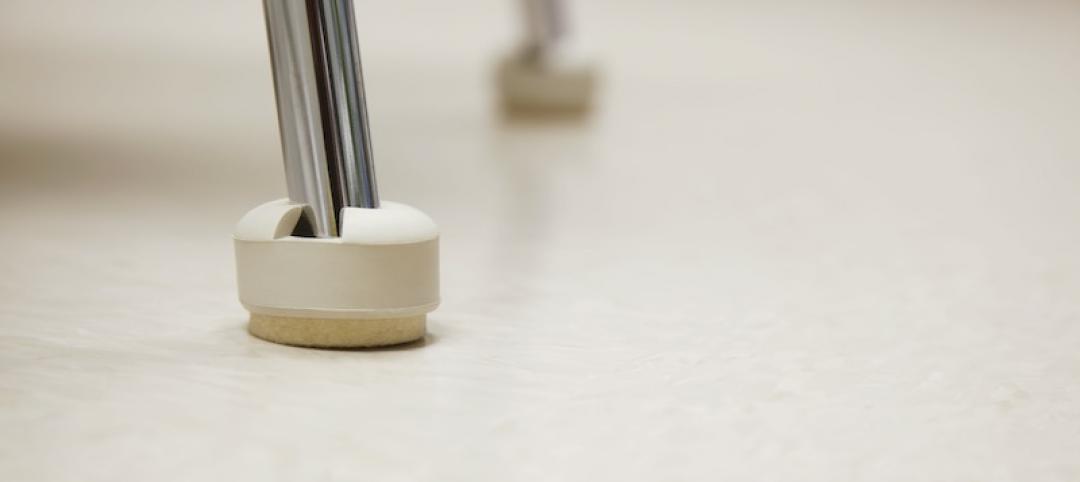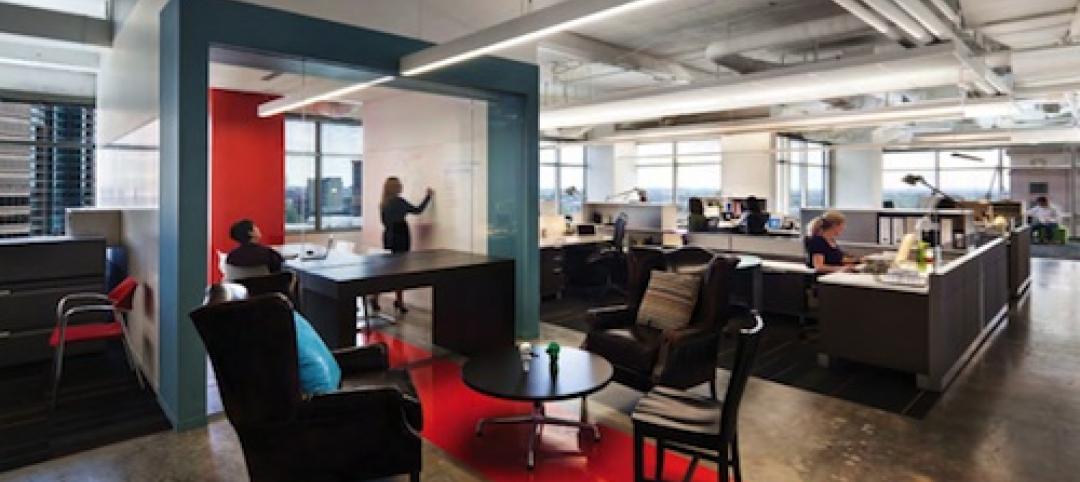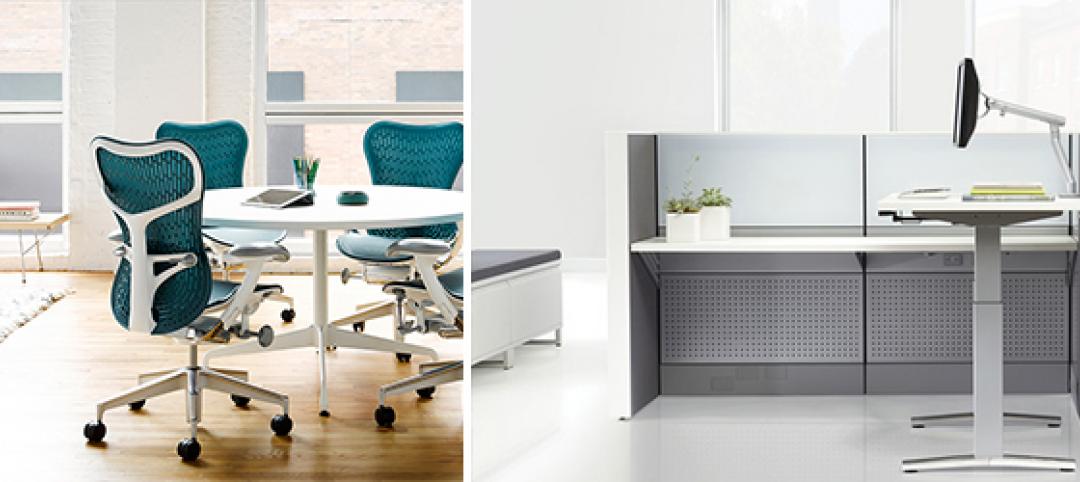You’ve made the jump. You took the risk and have officially set out alone, swimming against the current in an overwhelming sea of large corporations. Your ideas get legs, even take flight, and your workload begins to demand an ever-growing crop of new talent. You beef up your compensation offerings and benefits packages. You move into a new space and add a slew of amenities to attract the best and brightest in the industry. What could possibly go wrong?
For companies experiencing rapid growth, work-life balance can be a challenge to maintain, yet it remains a vital aspect of a healthy work environment.
There is an opportunity to create social opportunities within the workplace, while offering simple gestures that allow employees to more efficiently accomplish day-to-day life, customized to each individual.
Our workplace team at LEO A DALY aims to shape physical environments to allow these features to thrive. However, at the end of the day, many amenities are truly operational in nature and rely heavily on an owner’s long-term commitment.
As you set out on your quest to provide every available amenity to your employees, it can be overwhelming. We recommend prioritizing your desired amenities and considering the following principles to help employees maintain a healthy balance.
Redefine the traditional view of work-life balance
We spend a lot of time in our jobs. The 40-hour work week no longer exists. In fact, in today’s workplace, there is no longer such a thing as “after work.” Employees’ lives can exist largely within the office, or they can work remotely from home with little-to-no direct interaction with their co-workers.
Definitions of work-life balance are numerous and vary widely. This balance has been traditionally perceived as having equal time committed to work, family, hobbies, outside social events, etc. – doing whatever it takes to accomplish all things for all people. However, this balance is truly individualized. It is driven by each person and will vary over time, sometimes every day. The right balance for one employee will seem absurd to someone else. The right balance today may be different tomorrow.
Most importantly, striking that perfect balance has undeniable health benefits. Overly stressed employees can become susceptible to workplace burnout, increasing the potential for disengagement, errors, accidents, sick leave and eventually high turnover rates. To combat stress, service-based amenities can help employees reduce demands on their time. Social amenities can brighten their days, providing interaction and engagement. When employees feel balanced (by their own definition), they will be happy, healthy, productive and a shining example to recruit new top talent.
Understand the difference between service-based and social amenities
Service-based amenities make life a little easier. They are conveniences that would otherwise take time away from our day. They allow life to happen outside the workplace.
- During site selection, plan for access to public transportation.
- Coordinate internal ridesharing programs.
- Offer powerful Wi-Fi for untethered collaborative working.
- Strategically arrange healthy food selections for breakfast, lunch and dinner.
- Provide reusable flatware, plates and water bottles with filling stations throughout.
- Provide a staff concierge service for mail service and package delivery/reception, dry cleaning, last-minute grocery needs, airport travel.
- Staff a full-time handyman to complete odds and ends at employees’ homes, reducing the stress of at-home coordination.
- Set aside space for dedicated lactation rooms for new mothers and quiet rooms for private matters, no questions asked.
- Investigate childcare options: internal daycares, subsidizing nearby daycare centers.
- Provide temporary pop-up specialties: barber, hair stylist, clinic/health assessment services.
Social amenities are engaging, bringing people together to create a vibrant work culture. They activate interaction between employees, and potentially invite the community to join the experience. Employees engaged in their community only strengthen your culture. They create life inside the workplace.
- Activate common break areas with nearby circulation and seating variety.
- Provide coffee and other beverage options in common spaces to start the morning.
- Boost Wi-Fi capacity, and allow connectivity to personal devices.
- Create large multi-purpose spaces and encourage use by community groups.
- Integrate spaces for activity: gym equipment, group fitness, multi-purpose space, outdoor walking trails.
- Offer access to an on-site staff trainer and instructed classes.
- Provide locker rooms with showers and changing facilities.
- Create recreation spaces with video games, simulators, pool tables, foosball, etc.
- Incorporate a theater room.
- Provide access to snacks and beverages, alcoholic and otherwise.
- Partner with local retailers for ground-level access to coffee shops, boutiques, eateries, etc.
Designing for balance
You know your people, and you are the subject matter expert as we begin our work. LEO A DALY’s workplace team has the privilege to listen and learn about a new process with each new client. Direct collaboration with you leads to design for the right variety of service-based and social amenities, customized to your specific workplace culture. We craft experiences and curated views of workplace features. We create spaces that are flexible to adapt to new trends.
As you grow, be smart and prioritize the conveniences you offer, find the right mix of service and social perks to fit your culture and encourage employees to break the mold as they find their perfectly customized work-life balance. Healthy employees make for healthy companies.
Related Stories
| Aug 13, 2013
DPR's Phoenix office, designed by SmithGroupJJR, affirmed as world's largest ILFI-certified net-zero facility
The new Phoenix Regional Office of DPR Construction, designed by SmithGroupJJR, has been officially certified as a Net Zero Energy Building by the International Living Future Institute (ILFI). It’s the largest building in the world to achieve Net Zero Energy Building Certification through the Institute to date.
| Aug 8, 2013
Stanley Hardware introduces Flexi-Felt for protecting floors
Stanley Hardware offers a solution to the frustrating problem of protecting your floors. The answer is Flexi-Felt®, an innovative product line that eliminates the aggravation of frequently replacing felt pads and leg tips that usually wear down or fall off, causing damage to expensive floors.
| Aug 8, 2013
New green property index could boost REIT investment in more sustainable properties
A project by the National Association of Real Estate Investment Trusts (NAREIT), the FTSE Group, and the U.S. Green Building Council to jointly develop a Green Property Index could help REITs attract some of the growing pool of socially responsible investment money slated for green investments.
| Aug 6, 2013
CoreNet: Office space per worker shrinks to 150 sf
The average amount of space per office worker globally has dropped to 150 square feet or less, from 225 square feet in 2010, according to a recent global survey conducted by CoreNet Global.
| Aug 6, 2013
Australia’s first net zero office building features distinctive pixelated façade
Australia's first carbon neutral office building, featuring a distinctive pixelated façade, recently opened in Melbourne.
| Jul 30, 2013
In support of workplace chatter
As the designers of collaborative work environments, architects and engineers understand how open, transparent spaces can cultivate the casual interaction and knowledge sharing that sparks innovation. Now a new study reveals another potential benefit of open workplaces: social interaction that supports happier employees.
| Jul 29, 2013
2013 Giants 300 Report
The editors of Building Design+Construction magazine present the findings of the annual Giants 300 Report, which ranks the leading firms in the AEC industry.
| Jul 25, 2013
3 office design strategies for creating happy, productive workers
Office spaces that promote focus, balance, and choice are the ones that will improve employee experience, enhance performance, and drive innovation, according to Gensler's 2013 U.S. Workplace Survey.
| Jul 25, 2013
How can I help you?: The evolution of call center design
Call centers typically bring to mind an image of crowded rows of stressed-out employees who are usually receiving calls from people with a problem or placing calls to people that aren’t thrilled to hear from them. But the nature of the business is changing; telemarketing isn’t what it used to be.
| Jul 23, 2013
Tell us how you're reimagining the medical office building
"Obamacare" implementation will add thousands of people to the ranks of the insured, including many who formerly sought primary care in emergency rooms. Now, these patients will have coverage that allows them to more easily access the typical treatment channels—and that means greater demand for services provided in medical office buildings.
















